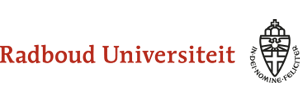American English Phonetics
Another American English Faculty Project
8.7.1 MOP (Maximum Onset Principle)
The MOP says simply always make the onset as long as it can be.
When confronted with a string of consonants like /-kstr-/ in extra, the longest possible onset for the second syllable is /str-/. This is because */kstr-/, though longer, is not a possible onset, and both /tr-/ and /r-/, though possible, are shorter than /str-/.
While this principle is very simple indeed, to apply it we need to know what a possible onset is. All GA consonants can be a syllable onset. (Although /ŋ/ and /ʒ/ are not permitted in the onset of the first syllable in a word.) As a result, connect, hammer, pleasure are cut as follows by the MOP:
connect: /(kə)(ˈnɛkt)/
hammer: /(ˈhæ)(mər)/
pleasure /(ˈplɛ)(ʒər)/.
When there is more than one consonant, we can equate ‘possible onset’ with ‘possible beginning of a word’.
Here are a couple of words for practice. Ask yourself where the MOP would make the syllable cuts, and then transcribe the words before you attempt to syllabify them.
bodkin Bedford happy Washington
abstract contrive transpire afflicted
salty Arkansas praying husband
gospel correct poultry gastronomy
after latex Jeffrey belfry
In an artificially careful style of speech, this is the way in which you would pronounce these words. In this style, syllabic consonants are unlikely to occur. So we assume that /ə/ is present in the second syllables of words like uncle, eater, cotton, rhythm when MOP applies (/(ʌŋ)(kəl)/, /(iː)(tər)/, etc.), even though in natural speech the pronunciation /ʌŋkl̩|/ etc. would be used.
